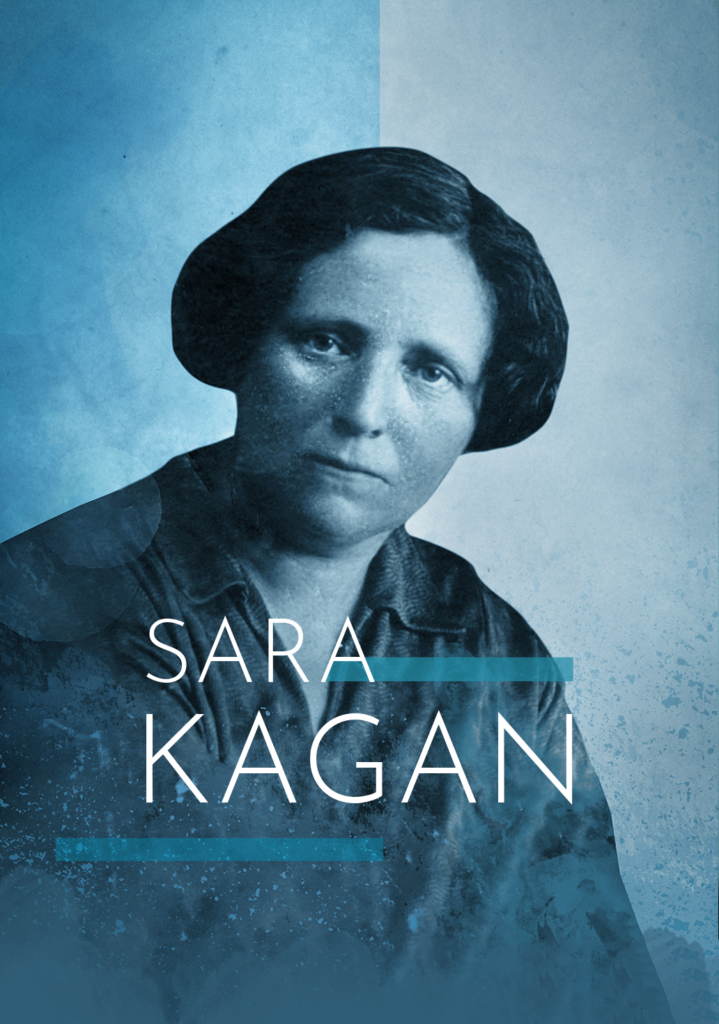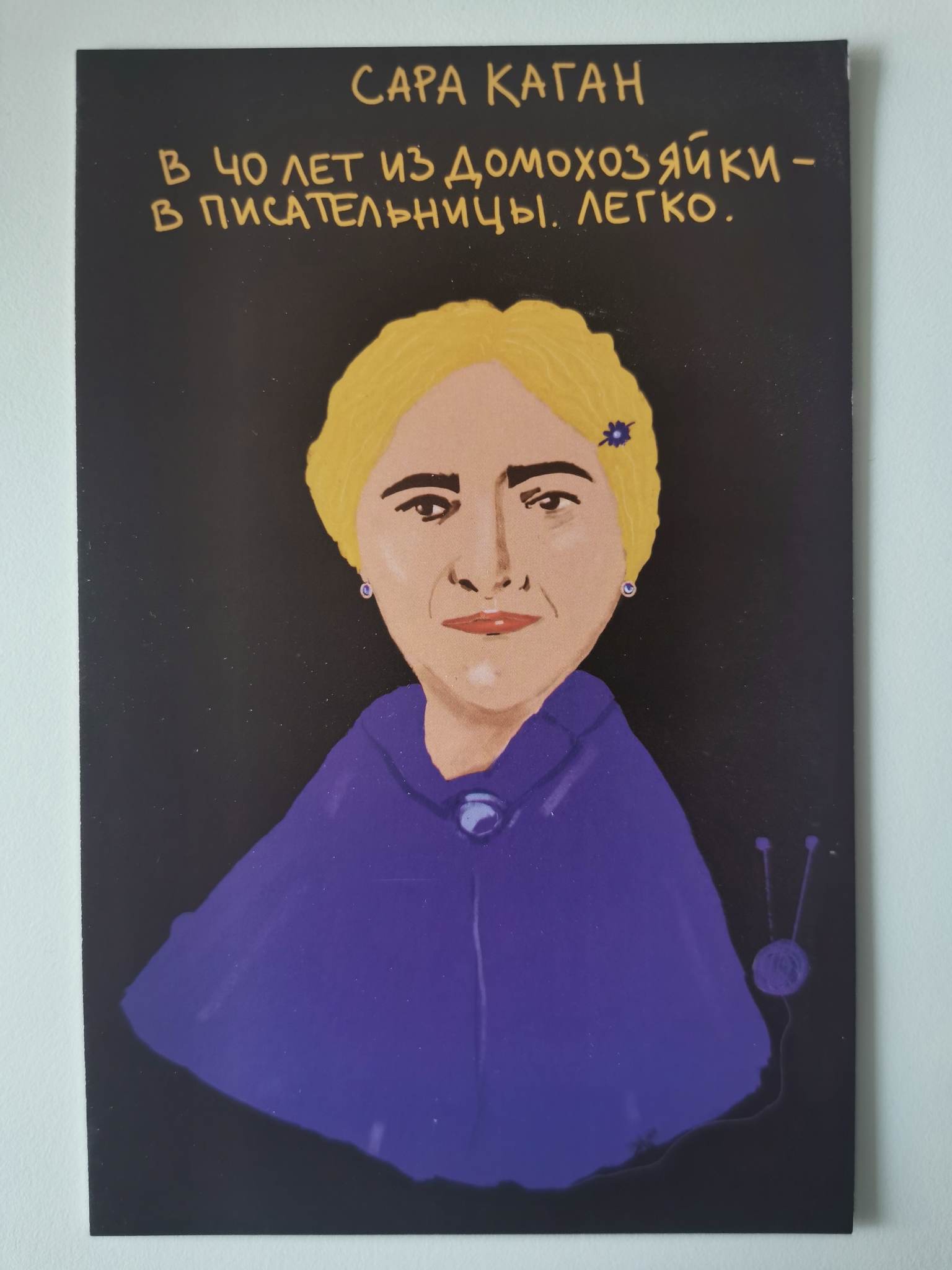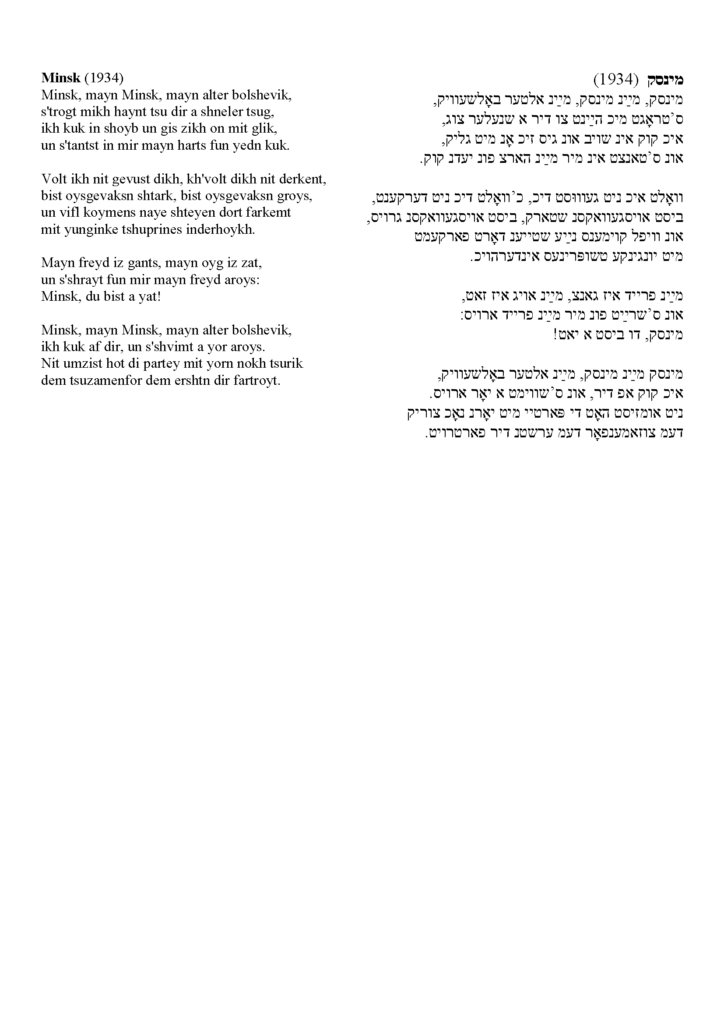3 July 1885, Maksimovichi (a village in Belarus)
– 1941, the Minsk Ghetto
Biografi
Sara Kagan var en jiddisk dikter og skribent. Hun var sannsynligvis det eneste kvinnelige medlemmet i den jødiske avdelingen av forfatterforeningen i Den hviterussiske sosialistiske sovjetrepublikk (BSSR) på 1930-tallet. Hun skrev særlig om livet på landsbygda, naturen og aktuelle samfunnsspørsmål.
Hun ble født i Maksimovichi, en landsby i dagens Belarus. Faren var skogsarbeider, og moren tok seg av de ti barna. Kjærligheten til litteratur hadde hun arvet fra moren. Som voksen jobbet hun som leder av biblioteket i Babruysk. Fra tid til annen deltok hun på møter for unge forfattere i Minsk. I 1935 foreslo kommunistpartiets jødiske avdeling i forfatterforeningen at hele familien skulle flytte til Minsk. Sannsynligvis var hun den eneste kvinnen i den jødiske avdelingen i forfatterforeningen. Samtidig som hun tok kveldsstudier ved Institutt for pedagogikk ved Det filologiske fakultetet, jobbet hun, tok seg av hjemmet og de tre sønnene. På 1930-tallet døde et av barna av lungebetennelse, noe som preget henne sterkt.
Sara Kagan skrev på jiddisk og var en del av det jødiske forfattermiljøet som blomstret opp etter den russiske revolusjonen. Hun debuterte i 1929 med novellesamlingen Der ershter prayz (på norsk: 'Førsteprisen’). I tiåret før andre verdenskrig gav hun i tillegg ut tre diktsamlinger: In veg (‘På vei’), Mayn heymland (’Mitt hjemland’), og Undzere mentshn (’Vårt folk’). Før krigen brøt ut kom også romanen Der Fidler (’Fiolinisten’). Flere av bøkene hennes, blant annet en novellesamling, ble oversatt til belarusisk av Zmitrok Biadula i 1940. Sara Kagan jobbet i redaksjonen til Shtern (’Stjerne’), et jødiskspråklig litterært tidsskrift. Her skrev hun om aktuelle temaer. Hun var også opptatt av landsbygda – et område som alltid stod hennes hjerte nær – landskapet i Belarus og bøndene – en gruppe hun framstilte som helter i tekstene sine.
Da den tyske hæren erobret Minsk i 1941, ble Sara Kagan og familien hennes sendt til gettoen. Her døde hun sammen med mannen sin og en yngre sønn. Hennes eldste sønn var soldat og ble drept ved fronten. Ingen av hennes nærmeste slektninger overlevde krigen.
Portrett av Sara Kagan: © Yad Vashem.
Sara Kagan, Yad Vashem, Hall of Names photos, Arkivsignatur: 15000/14118413
Sara Kagan var en jiddisk dikter og skribent. Hun var sannsynligvis det eneste kvinnelige medlemmet i den jødiske avdelingen av forfatterforeningen i Den hviterussiske sosialistiske sovjetrepublikk (BSSR) på 1930-tallet. Hun skrev særlig om livet på landsbygda, naturen og aktuelle samfunnsspørsmål.
Hun ble født i Maksimovichi, en landsby i dagens Belarus. Faren var skogsarbeider, og moren tok seg av de ti barna. Kjærligheten til litteratur hadde hun arvet fra moren. Som voksen jobbet hun som leder av biblioteket i Babruysk. Fra tid til annen deltok hun på møter for unge forfattere i Minsk. I 1935 foreslo kommunistpartiets jødiske avdeling i forfatterforeningen at hele familien skulle flytte til Minsk. Sannsynligvis var hun den eneste kvinnen i den jødiske avdelingen i forfatterforeningen. Samtidig som hun tok kveldsstudier ved Institutt for pedagogikk ved Det filologiske fakultetet, jobbet hun, tok seg av hjemmet og de tre sønnene. På 1930-tallet døde et av barna av lungebetennelse, noe som preget henne sterkt.
Sara Kagan skrev på jiddisk og var en del av det jødiske forfattermiljøet som blomstret opp etter den russiske revolusjonen. Hun debuterte i 1929 med novellesamlingen Der ershter prayz (på norsk: 'Førsteprisen’). I tiåret før andre verdenskrig gav hun i tillegg ut tre diktsamlinger: In veg (‘På vei’), Mayn heymland (’Mitt hjemland’), og Undzere mentshn (’Vårt folk’). Før krigen brøt ut kom også romanen Der Fidler (’Fiolinisten’). Flere av bøkene hennes, blant annet en novellesamling, ble oversatt til belarusisk av Zmitrok Biadula i 1940. Sara Kagan jobbet i redaksjonen til Shtern (’Stjerne’), et jødiskspråklig litterært tidsskrift. Her skrev hun om aktuelle temaer. Hun var også opptatt av landsbygda – et område som alltid stod hennes hjerte nær – landskapet i Belarus og bøndene – en gruppe hun framstilte som helter i tekstene sine.
Da den tyske hæren erobret Minsk i 1941, ble Sara Kagan og familien hennes sendt til gettoen. Her døde hun sammen med mannen sin og en yngre sønn. Hennes eldste sønn var soldat og ble drept ved fronten. Ingen av hennes nærmeste slektninger overlevde krigen.



 Sara Kagan i Far vos?
Sara Kagan i Far vos?
